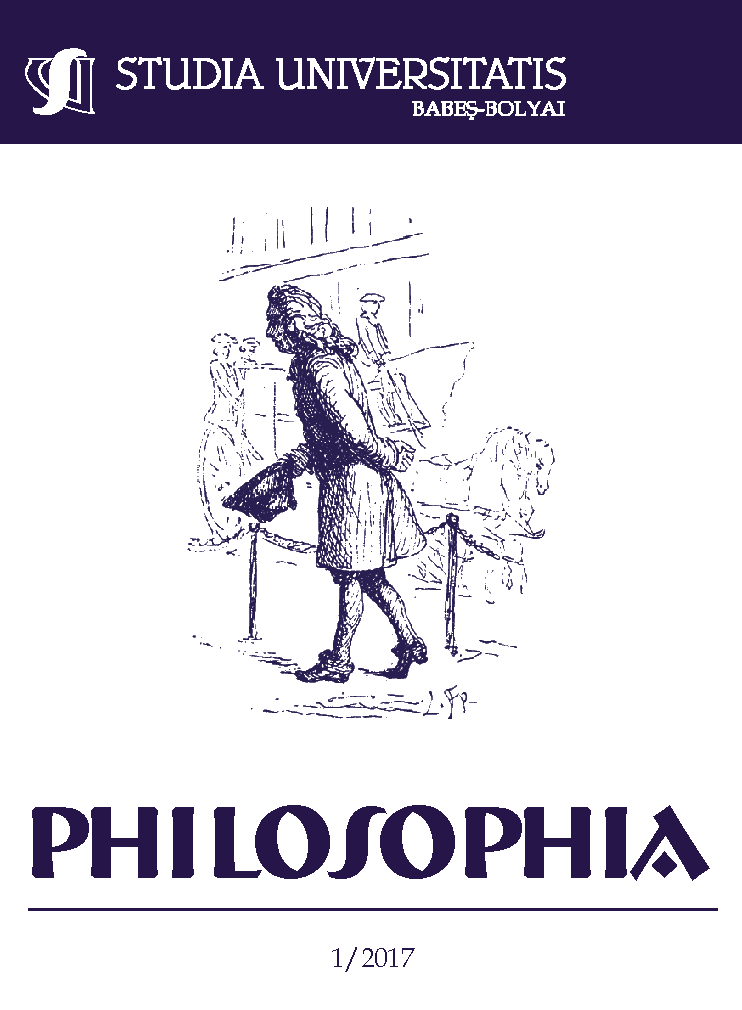‟LE RITE” (1969) D’INGMAR BERGMAN: L’ACTEUR-COMME-ACTEUR ENTRE L’‟ANAGNORISIS” ET LA FRAGILITÉ DE L’IDENTIFICATION
DOI:
https://doi.org/10.24193/subbphil.2017.1.07Keywords:
repetition, ritual, anagnorisis, identity, sufferanceAbstract
Ingmar Bergman’s The Rite (1969): the Actor-as-Actor between Anagnorisis and Fragility of Identification. The present paper analyses the strange identification experienced by the Bergmanian actor-as-actor, due to a perpetual memory of the body. We will examine the manner in which the actor who plays the role of the actor passes through a painful and disarticulated identification, originated in August Strindberg’s radiations of the ego (Ausstrahlungen des Ichs). Accordingly, the radiations are not only writings in the first person, but also egotistical discourse; binding the ego on the stage, the playwright’s world becomes not only a psychic experience, but also a diurnal dream lived with the eyes wide open (as in the plays The Road to Damascus and A Dream Play). Therefore, in the film The Rite (Riten, 1969, TV movie), the total and stylized actor enacts the virtue of the crime in order to re-cognize himself; in this context, the achievement of his persona confirms the thorough execution of a murder – that is to say that the actor’s visage foreshadows the melancholic soleil noir of the Universal tragedy.
References
Adler, Thomas P., “Daddy Spoke to Me!: Gods Lost and Found in Long Day’s Journey Into Night and Through a Glass Darkly”, Comparative Drama vol. 20, no. 4, 1986, p. 345.
Aristotel, Poetica, Bucarest: Iri, 1998, trad. D. M. Pippidi.
Artaud, Antonin, Teatrul şi dublul său [Le Théâtre et son double], Cluj-Napoca: Echinox, 1997, trad. Voichiţa Sasu et Diana Tihu-Suciu.
Aumont, Jacques, Ingmar Bergman. «Mes films sont l’explication de mes images», Paris: Cahiers du cinéma, 2003.
Bergman, Ingmar, Images: My Life in Film, New York: Arcade Publishing, 2007, trans. from the Swedish by Marianne Ruuth, introd. by Woody Allen.
Blake, Richard Aloysius, The Lutheran Milieu of the Films of Ingmar Bergman, New York: Arno Press, 1978 (dissertation for the degree of Dr. of Philosophy, Illinois 1972).
Botz-Bornstein, Thorsten, Films and Dreams. Tarkovsky, Bergman, Sokurov, Kubrick and Wong Kar-Wai, Lexington Books, 2008.
Boyles, Christina, “The Duality of Seeing «Darkly»: Analyzing Bergman’s Karin in Through a Glass Darkly”, South Central Review, Vol. 31, no. 1, Spring 2014, pp. 17-33.
Brook, Peter, The Empty Space. A Book About the Theatre: Deadly, Holy, Rough, Immediate, New York: Touchstone, 1968.
Cauly, Olivier, Mise(s) en scène de la répétition. Bergman, Dreyer, Ibsen, Strindberg, L’Harmattan, 2012.
Cowie, Peter, Ingmar Bergman: A Critical Biography, André Deutsch, 1992 (1982).
Gado, Frank, The Passion of Ingmar Bergman, Durham: Duke Univ. Press, 1986.
Grotowski, Jerzy, Teatru și ritual. Scrieri esențiale [Théâtre et rituel], Bucarest: Nemira, 2014, trad. Vasile Moga, préf. George Banu.
Koskinen, Maaret, “Art as Cult: Bergman’s Riten and Backanterna”, TijdSchrift voor Skandinavistiek, vol. 20 (1999), no. 1, pp. 133-147.
Smith, Lawrence D., “Play-within-a-Play or Theatre-in-Film. Ingmar Bergman’s Through a Glass Darkly”, Theatre Symposium, vol. 19, 2011, pp. 91-110.
Steene, Birgitta; Törnqvist, Egil, Strindberg on Drama and Theatre. A Source Book, Amsterdam Univ. Press, 2007.
Strindberg, August, Teatru [Théâtre], Bucarest: Univers, 1973, trad. Valeriu Munteanu, préf. Alexandru Sever.
Strindberg, A., The Road to Damascus (I, II, III), Project Gutenberg Ebook.
Szondi, Peter, Teoria dramei moderne (1880-1950) [Théorie du drame moderne 1880-1950], Cluj-Napoca: Tact, 2012, trad. Maria-Magdalena Anghelescu, George State, préf. Ştefana et Ion Pop-Curşeu.
Downloads
Published
How to Cite
Issue
Section
License
Copyright (c) 2017 Studia Universitatis Babeș-Bolyai Philosophia

This work is licensed under a Creative Commons Attribution-NonCommercial-NoDerivatives 4.0 International License.





